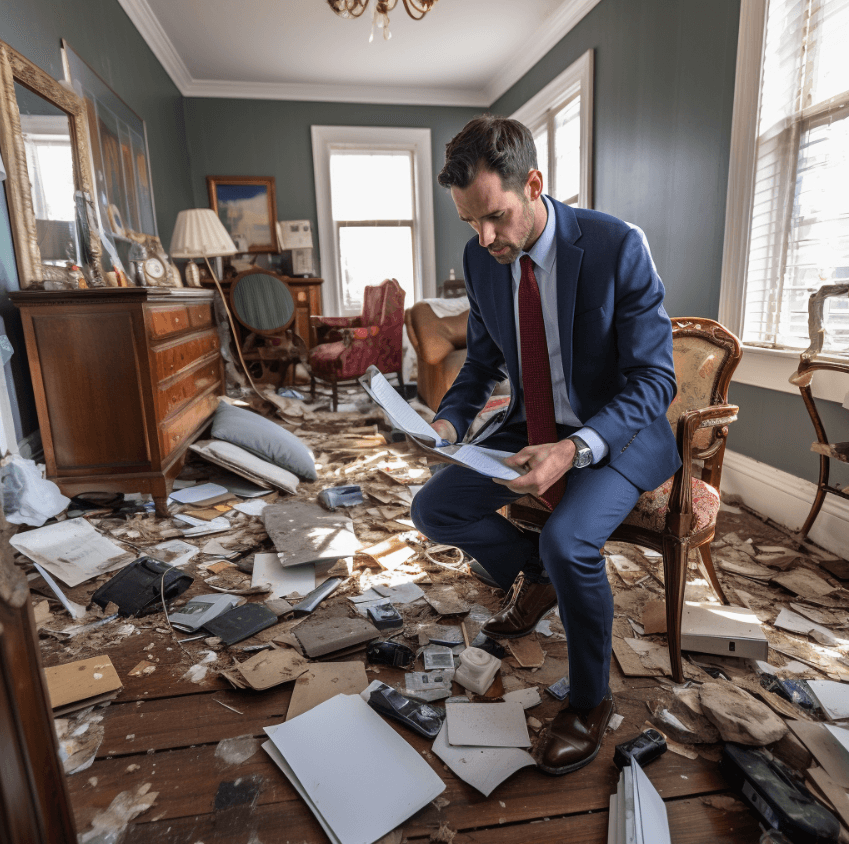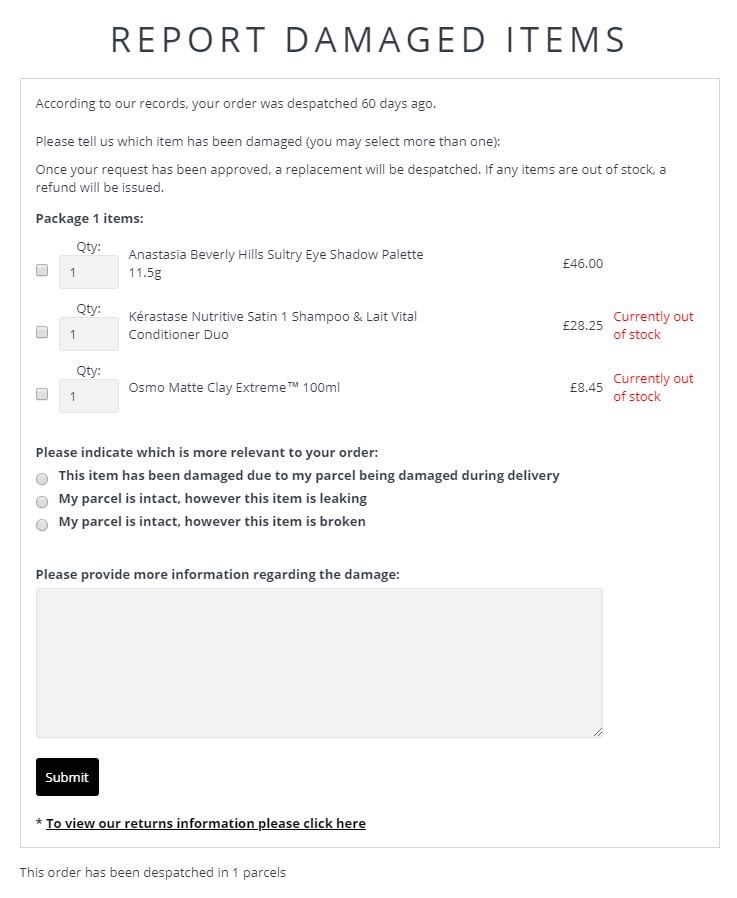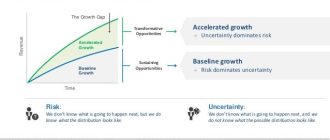
How Adjusters Determine the Value of Lost or Damaged Personal Items.
When accidents or disasters occur, it is not uncommon for personal belongings to be lost or damaged. In such situations, insurance companies often dispatch adjusters to determine the value of these items. These adjusters play a crucial role in assessing the financial compensation that should be provided to policyholders. Understanding how adjusters calculate the value of lost or damaged personal items is therefore essential for anyone navigating the insurance claims process.
Adjusters rely on various factors to determine the value of lost or damaged personal items. They take into account factors such as the brand, age, condition, and market value of the item. For items with sentimental value, adjusters understand that it may be challenging to assign a monetary worth. In these cases, adjusters often rely on expert opinions or appraisals to determine a fair value.
It is important to note that adjusters do not calculate the value of lost or damaged personal items based on the cost of buying a replacement. Instead, they consider the item’s actual cash value, which takes into account depreciation. This means that even relatively new items may not be valued at the original purchase price. Adjusters aim to provide fair compensation that reflects the item’s current worth, considering factors such as wear and tear.
Insurance policies typically outline the coverage limits for personal items, which can have an impact on the value assessed by adjusters. Adjusters must ensure that the value assigned to lost or damaged personal items falls within these limits. If the value exceeds the coverage limits, policyholders may receive compensation up to the limit, without being fully reimbursed for the item’s total worth.
In conclusion, adjusters play a crucial role in evaluating and determining the value of lost or damaged personal items. Their assessment is based on a variety of factors, including the item’s brand, age, condition, and market value. It is important for policyholders to understand how adjusters calculate these values to ensure fair compensation for their loss.
Factors Considered by Adjusters
When it comes to determining the value of lost or damaged personal items, adjusters take several factors into consideration. These factors help them accurately assess the value of the items and provide fair compensation to the policyholder.
| Condition | The condition of the item before it was lost or damaged is an important factor that adjusters consider. Items in excellent condition typically have a higher value compared to those in poor condition. |
| Age | The age of the item is another important factor. Adjusters take into account the depreciation of the item over time, as older items generally have lower values. |
| Market Value | Adjusters consider the market value of the item, which is the price at which it could be sold in the current market. This helps determine the value of the item, especially if it is a common or easily replaceable item. |
| Replacement Cost | If the item is not easily replaceable or is a unique item, adjusters may consider the replacement cost. This is the cost to replace the item with a similar one, taking into account factors such as brand, model, and features. |
| Appraisals | If the item is a high-value or rare item, adjusters may rely on professional appraisals to determine its value. These appraisals provide an expert opinion on the item’s worth. |
By thoroughly considering these factors, adjusters can provide an accurate assessment of the value of lost or damaged personal items, allowing policyholders to receive fair compensation for their losses.
Methods Used to Determine Value
When adjusters are tasked with assessing the value of lost or damaged personal items, they employ several methods to ensure a fair and accurate evaluation. These methods include:
- Replacement Cost Method: This method involves determining the cost to replace the lost or damaged item with a similar item of equal quality. Adjusters consider factors such as brand, age, condition, and market value when calculating the replacement cost.
- Actual Cash Value Method: In this method, adjusters determine the value of the lost or damaged item based on its original cost minus depreciation. Adjusters take into account factors like the item’s age, condition, and useful life to calculate its actual cash value.
- Market Value Method: Adjusters may also consider the current market value of the lost or damaged item. This method involves researching similar items in the market to determine the item’s value based on supply, demand, and other market factors.
- Expert Appraisal Method: When dealing with unique or high-value items, adjusters may seek the expertise of professional appraisers. These appraisers evaluate the lost or damaged item based on their knowledge and expertise in the specific field.
By utilizing these methods, adjusters can accurately determine the value of lost or damaged personal items, allowing for a fair and equitable settlement for the insured party.
Market Value vs. Replacement Cost
When it comes to determining the value of lost or damaged personal items, adjusters often rely on two main methods: market value and replacement cost.
Market value refers to the price that an item would sell for on the open market. To determine the market value of a damaged or lost item, adjusters take into account factors such as the item’s age, condition, and current demand. They may consult online marketplaces, appraisers, and other sources to get an accurate estimate of the item’s market value.
On the other hand, replacement cost is the amount of money it would take to replace the item with a new one of similar kind and quality. Adjusters consider the current cost of the item, including any taxes or fees associated with the purchase. They also factor in any depreciation, which is the decrease in value over time due to wear and tear. In some cases, adjusters may consult vendors or retailers to determine the replacement cost.
Both market value and replacement cost have their pros and cons. Market value takes into account the actual worth of the item on the market, which can be helpful when determining compensation. However, it may not always reflect the sentimental value or the value of rare or vintage items. Replacement cost, on the other hand, ensures that the policyholder is reimbursed for the cost of replacing the item with a similar one. However, it may not account for any appreciation in value over time.
Ultimately, adjusters use their expertise and knowledge of the market to determine the most appropriate method for valuing lost or damaged personal items. They aim to provide fair and accurate compensation to policyholders based on the value of their items at the time of the loss or damage.
Depreciation and Age of the Item
When determining the value of lost or damaged personal items, adjusters take into account the concept of depreciation and the age of the item. Depreciation refers to the decrease in value of an item over time due to wear and tear, obsolescence, and other factors.
Adjusters use depreciation as a way to estimate the current value of an item, as opposed to its original purchase price. The age of the item is a key factor in determining the depreciation value. Generally, the older an item is, the more depreciation it will have.
Adjusters may use various methods to calculate depreciation, such as straight-line depreciation or percentage-based depreciation. These methods take into account the estimated lifespan of the item and the percentage of value that is lost each year due to aging.
For example, if a personal item, such as a laptop, is estimated to have a lifespan of five years and is three years old at the time of damage, adjusters may determine that the item has lost 60% of its value due to depreciation.
Adjusters also consider the condition of the item at the time of damage. If the item was well-maintained and in good condition, it may have less depreciation than an item that was heavily used or damaged prior to the incident.
It’s important to note that adjusters may use different depreciation rates for different types of items. For example, electronics may have a higher depreciation rate than furniture or clothing.
By taking into account depreciation and the age of the item, adjusters can provide a fair and accurate value for lost or damaged personal items.
Condition of the Item
One of the factors that adjusters take into consideration when determining the value of lost or damaged personal items is the condition of the item. Adjusters understand that items in excellent condition hold a higher value compared to those in poor condition.
The adjusters will thoroughly inspect the damaged item and evaluate its condition prior to the loss or damage event. They will assess any pre-existing damage, signs of wear and tear, or any other factors that may have impacted the item’s value prior to the incident.
Adjusters will also consider the age of the item and its depreciation value over time. They will take into account the estimated lifespan and durability of the item to determine how much wear and tear is considered normal. Any damage beyond what is expected for an item of its age may result in a decrease in its value.
Additionally, adjusters will review any documentation or evidence provided by the policyholder, such as receipts, appraisals, or photographs, to further determine the condition of the item. These documents can provide valuable information about the item’s original condition and value.
It is important for policyholders to provide accurate and detailed information about the condition of their personal items to ensure a fair and accurate evaluation by the adjusters. Providing clear documentation and evidence can help support the value of the items and ensure a smooth claims process.
Documentation Required for Evaluation
When it comes to evaluating the value of personal items that have been lost or damaged, adjusters rely heavily on documentation. Whether it’s a receipt, an appraisal, or a photograph, having the right documentation can make a significant difference in determining the value of your items.
First and foremost, adjusters will need proof of ownership. This can come in the form of receipts, invoices, or any other documentation that shows you purchased the items. If you don’t have receipts, don’t worry – other forms of documentation can help establish ownership, such as photographs, warranty information, or even testimony from friends or family who can verify that the items belonged to you.
In addition to proof of ownership, adjusters will also need documentation showing the value of the items. This can be in the form of appraisals, receipts from recent purchases, or even online listings for similar items. The more recent the documentation, the more accurate the valuation will be, so try to provide the most up-to-date information available.
Lastly, if your personal items were damaged rather than lost, be sure to document the extent of the damage. This can be done through photographs, written descriptions, or even repair estimates. The more detailed the documentation, the better the adjuster will be able to evaluate the value of your damaged items.
Remember, it’s important to be thorough and organized when gathering documentation for the evaluation process. The more information you can provide, the easier it will be for adjusters to determine the value of your lost or damaged personal items.
Special Considerations for Antique or Rare Items
When it comes to determining the value of lost or damaged personal items, insurance adjusters have to take into account the special considerations that come with antique or rare items. These types of items can often be difficult to replace, making their value harder to determine.

First and foremost, it is important to establish the authenticity and provenance of the item. This includes determining its age, origin, and any unique characteristics that make it valuable. Adjusters may consult with experts such as appraisers or historians to gather this information.
Next, adjusters will consider the condition of the item prior to the loss or damage. Antique or rare items in excellent condition will typically have a higher value than those that are heavily damaged or have significant wear. Adjusters may inspect photographs or documentation to assess the condition of the item before the loss.
Another factor to consider is the rarity of the item. If an item is one-of-a-kind or extremely rare, it can significantly increase its value. Adjusters may research similar items that have been sold or appraised in order to determine a fair market value.
Additionally, adjusters will take into account the sentimental or historical value of the item. This can be particularly important for family heirlooms or items with sentimental value that cannot be easily replaced. Adjusters may consider the emotional attachment to the item and its significance to the insured.
In conclusion, determining the value of antique or rare items requires special considerations. Insurance adjusters will carefully assess the authenticity, condition, rarity, and sentimental value of these items in order to determine a fair and accurate value.
Importance of Properly Describing the Item
When it comes to determining the value of lost or damaged personal items, one crucial aspect is properly describing the item. Accurately describing the item helps insurance adjusters assess its worth and calculate the appropriate compensation.
Insurance adjusters rely on the information provided about the item to understand its unique characteristics, condition, and quality. By including specific details such as brand, model, age, and condition, you can ensure that the adjuster has a complete picture of the item’s value.
Providing a thorough description is especially important for items with sentimental value or rarity, as their value can be especially subjective. By clearly explaining the significance of the item, including any relevant documentation or proof of authenticity, you can help the adjuster understand and assess its worth more accurately.
In addition to describing the physical attributes of the item, it is also important to provide supporting documentation that can help verify its value. This can include purchase receipts, appraisals, warranty documents, and photographs. The more proof you can provide about the item’s value, the stronger your case will be when it comes to the insurance claim.
Properly describing the item not only helps in determining its value but also ensures that you receive fair compensation for its loss or damage. By taking the time to provide a detailed and accurate description, you can help the insurance adjuster understand the item’s worth and ensure that you are properly reimbursed for your loss.
Remember: When describing the item, be clear, concise, and provide as much relevant information as possible. The more details you provide, the better the adjuster can understand the item’s value and provide appropriate compensation.
Professional Appraisals and Expert Opinions
When it comes to determining the value of personal items that have been lost or damaged, insurance adjusters often rely on professional appraisals and expert opinions. These appraisals and opinions provide an accurate assessment of the value of the items in question, taking into account factors such as age, condition, and market demand.
A professional appraisal is conducted by a qualified individual who has in-depth knowledge and experience in valuing personal items. They use their expertise to evaluate the specific characteristics of the items and research comparable sales data to determine their value. This appraisal can provide a solid basis for negotiations between the policyholder and the insurance company.
In some cases, insurance adjusters may also seek out expert opinions to ensure an objective evaluation of the value of lost or damaged items. These experts could include specialists such as antique dealers, art appraisers, or gemologists, depending on the nature of the items. Their opinions can help corroborate the value determined by the professional appraiser and provide additional credibility to the claim.
Insurance adjusters consider professional appraisals and expert opinions as valuable tools in accurately determining the value of personal items. These assessments help establish the fair market value of the items and ensure that policyholders receive the appropriate compensation for their losses. By relying on the expertise of professionals, insurance adjusters can make informed decisions that are fair and equitable for all parties involved.
Insurance Policy Limits and Coverage
In order to determine the value of lost or damaged personal items, adjusters start by examining the insurance policy limits and coverage. Insurance policies typically have specific limits on the amount of coverage they provide for personal items. These limits can vary depending on the type of policy and the insurance company.
Adjusters will review the policy to understand the coverage limits for personal items and any specific exclusions or limitations. The adjuster will also consider the deductible, which is the amount the policyholder is responsible for paying out of pocket before the insurance coverage kicks in.
If the value of the lost or damaged items exceeds the policy limits, the policyholder may not be fully reimbursed for the loss. However, if the policy includes additional coverage options, such as scheduled personal property coverage or increased limits, the adjuster may be able to provide additional compensation.
It’s important for policyholders to review their coverage limits and consider any additional coverage options they may need for higher-value personal items. Adjusters will only be able to provide compensation up to the policy limits, so it’s crucial to ensure that coverage is adequate for the value of the items being insured.
In conclusion, adjusters use the insurance policy limits and coverage to determine the value of lost or damaged personal items. It’s important for policyholders to review their policy and consider any additional coverage options to ensure they are adequately protected in case of a loss.
Disputes and Negotiation of Value
In the process of determining the value of lost or damaged personal items, disputes may arise between the policyholder and the adjuster. These disputes can be regarding the overall value assigned to the items, the depreciation applied, or the replacement cost based on market value.
Adjusters typically rely on their expertise and experience to evaluate the value of personal items. However, it is not uncommon for policyholders to disagree with the initial assessment. In such cases, negotiation is essential to reach a fair and amicable resolution.
During negotiations, both parties should present evidence and documentation to support their arguments. Policyholders can provide purchase receipts, appraisals, or expert opinions to demonstrate the value of their lost or damaged items. Adjusters may also use their own data and market research to justify their valuation.
If the policyholder and adjuster are unable to reach an agreement through negotiation, the dispute may escalate to a formal appraisal process. This process involves hiring a neutral third-party appraiser, agreed upon by both parties, to review the evidence and make a final determination on the value of the items. The decision made by the appraiser is binding, meaning both parties must accept it as the final value.
Overall, disputes regarding the value of lost or damaged personal items can be resolved through open communication, negotiation, and, if necessary, the involvement of a neutral third-party appraiser. This ensures a fair and accurate assessment of the value of personal items in the claims process.
Appealing the Adjuster’s Valuation
After receiving an adjuster’s valuation for your lost or damaged personal items, you may find that you disagree with the value calculated. In such cases, it is possible to appeal the adjuster’s valuation and provide additional evidence to support your claim for a higher value. It is important to have a clear understanding of the process involved in appealing an adjuster’s valuation before proceeding.
First, carefully review the adjuster’s valuation and identify the specific items that are undervalued or overlooked. Make a list of these items along with evidence of their actual value, such as receipts, appraisals, or comparable sales prices for similar items. This evidence will serve as the basis for your appeal.
Next, contact your insurance company and inform them of your intention to appeal the adjuster’s valuation. Ask for the specific steps and documentation required for filing an appeal. The insurance company will provide you with the necessary forms and instructions.
Before submitting your appeal, ensure that you have prepared a compelling argument supported by adequate evidence. Clearly explain why you believe the adjuster’s valuation is incorrect and provide supporting documentation for each item that you are disputing. Be organized and concise in presenting your case.
Once you have gathered all the necessary documents and completed the appeal form, submit them to your insurance company. Keep copies of all documents and correspondence for your records.
After submitting your appeal, be prepared for the insurance company to conduct a review of your case. This may involve assigning a new adjuster, conducting an independent appraisal, or revisiting the evidence provided. The process can take some time, so it is important to be patient and follow up with the insurance company periodically to inquire about the progress of your appeal.
If the insurance company upholds their original valuation after the appeal, you may have additional options for recourse. Consider seeking legal advice or mediation services to further negotiate a fair settlement for your lost or damaged personal items.
In conclusion, appealing an adjuster’s valuation for lost or damaged personal items requires careful preparation and presentation of evidence. By following the steps outlined above, you can increase your chances of obtaining a fair valuation that accurately reflects the value of your items.
Working with a Public Adjuster
When dealing with a personal property claim for lost or damaged items, it can be a challenging and overwhelming experience to determine the value of your belongings. This is where public adjusters can be of great assistance.
Public adjusters are professionals who work on behalf of policyholders to help them navigate the complex process of insurance claims. They have the expertise and knowledge to assess the value of lost or damaged items and negotiate with insurance adjusters to ensure a fair settlement.
One of the main advantages of working with a public adjuster is their ability to accurately determine the value of your personal belongings. They have the experience and resources to conduct a thorough inventory of your items and assess their current market value.
Public adjusters understand the intricacies of insurance policies and can interpret the fine print to maximize your claim. They know what documentation is required and how to present the evidence to support your claim, which can greatly increase the chances of a successful settlement.
In addition, public adjusters have strong negotiation skills and can advocate on your behalf. They will work diligently to ensure that you receive fair compensation for your damaged or lost items, taking into account factors such as depreciation, replacement cost, and any applicable deductibles.
Working with a public adjuster can relieve a significant burden during the claims process. They will handle all the paperwork, communication, and negotiations with your insurance company, allowing you to focus on recovering from the loss or damage of your personal items.
Overall, when dealing with a personal property claim, it is highly recommended to consider working with a public adjuster. They have the expertise, experience, and resources to accurately determine the value of your items and negotiate with insurance adjusters to ensure a fair settlement. Their services can greatly simplify the claims process and increase the likelihood of a successful outcome.
Additional Coverage Options for High-Value Items
When it comes to insuring your personal belongings in the event that they are lost or damaged, it’s important to consider additional coverage options for high-value items. These items, such as jewelry, artwork, or valuable collectibles, may exceed the coverage limits of a standard personal property policy.
Insurers typically have limits on the amount of coverage provided for individual items or categories of items. If the value of your high-value items exceeds these limits, you may need to purchase additional coverage to ensure that you are adequately protected.
To determine the value of your high-value items, it’s important to have them appraised by a qualified professional who can provide an accurate assessment. This appraisal will consider factors such as the item’s condition, rarity, and market value. Once you have an updated appraisal, you can use this information to determine the appropriate coverage amount.
When considering additional coverage options, you may have a couple of options available to you. One option is to purchase a rider or endorsement to your existing personal property policy. This allows you to increase the coverage limits for specific high-value items without having to purchase a separate policy.
Another option is to purchase a separate policy specifically for your high-value items. This can provide more comprehensive coverage and may also offer additional benefits, such as coverage for loss or damage while the item is being transported.
Regardless of the option you choose, it’s important to review the terms and conditions of the coverage carefully. Pay attention to any deductibles, exclusions, or special requirements that may apply to your high-value items. It’s also a good idea to regularly review and update your coverage as the value of your items may change over time.
By taking the necessary steps to insure your high-value items, you can have peace of mind knowing that you are financially protected in the event of loss or damage.
undefined
How do insurance adjusters calculate the value of lost or damaged personal items?
Insurance adjusters calculate the value of lost or damaged personal items by taking into account factors such as the age and condition of the item, its original purchase price, depreciation, and comparable market prices.
What happens if I disagree with the value assigned to my lost or damaged personal items by the insurance adjuster?
If you disagree with the value assigned to your lost or damaged personal items by the insurance adjuster, you can provide documentation or receipts to support your claim and request a reevaluation. You can also hire your own appraiser to assess the value of the items.
Can I negotiate with the insurance adjuster to get a higher value for my lost or damaged personal items?
You can try to negotiate with the insurance adjuster to get a higher value for your lost or damaged personal items by providing evidence of their higher worth, such as receipts, appraisals, or comparable sales prices. It’s important to be prepared and have a strong argument for why you think the value should be higher.
What should I do if the insurance adjuster refuses to increase the value of my lost or damaged personal items?
If the insurance adjuster refuses to increase the value of your lost or damaged personal items, you can file a complaint with your insurance company and provide them with any additional evidence or documentation to support your claim. You can also consider seeking legal advice or contacting your state’s insurance regulatory agency for further assistance.
Is there a maximum limit to the value that insurance adjusters can assign to lost or damaged personal items?
There is no specific maximum limit to the value that insurance adjusters can assign to lost or damaged personal items. However, they will typically consider factors such as the item’s replacement cost, depreciation, and market value in determining its value.
How do insurance adjusters determine the value of lost or damaged personal items?
Insurance adjusters determine the value of lost or damaged personal items by taking into account factors such as the item’s age, condition, and market value. They may also consider the replacement cost of the item, if it is part of a set, and any depreciation that may have occurred over time.






